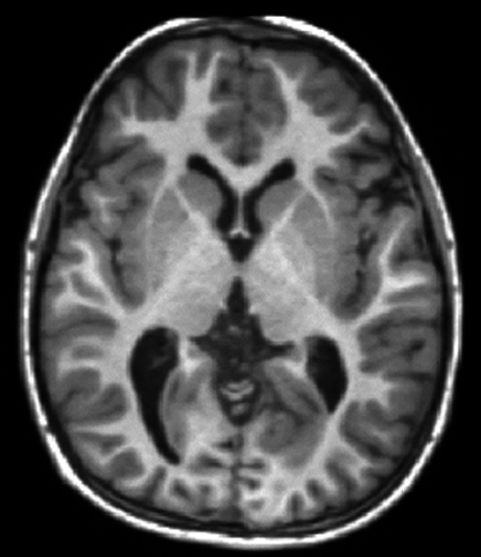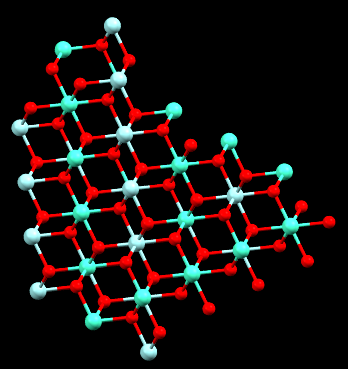Gadolinium
Gadolinium:

An MRI of the human brain (Image Courtesy: Johns Hopkins University; Licence: Wikicommons). Gadolinium compounds are often introduced to the body as ‘contrasting agents’ while recording MRI.
Facts about Gadolinium:
- Gadolinium: Silvery white metal, reacts rapidly with atmospheric oxygen and moisture to form a colored coating.
- Fun fact about Gadolinium: Gadolinium(III) forms beautiful fluorescent compounds (known as phosphors) and these have been used in projection (TV) technology!
- Chemical symbol: Gd
- Atomic number: 64
A crystal structure containing Gadolinium:

Structure of Gadolinium Zirconate, with the Gadolinium atoms shown in light green. This compound adopts the well know pyrochlore crystal structure.
Facts about this structure:
- Formula: (Gd2 O7 Zr2)n
- Structure name: Gadolinium Zirconate
- Fun fact about the structure: These Gadolinium based pyrochlore structures can incorporate actinide atoms in their lattice and thus can be used for nuclear waste management!
- ICSD number: 160158 (Find out more about the ICSD database)
- Associated publication: B.P. Mandal, A. Banerji, V. Sathe, S.K. Deb, A.K. Tyagi, Journal of Solid State Chemistry, 2007, 180, 2643, DOI: 10.1016/j.jssc.2007.07.007
More about Gadolinium:
Gadolinium was discovered towards the end of the nineteenth century and named after the silicate mineral Gadolinite in which it can be found in traces. It shows unusual change in magnetic properties (ferromagnetic to paramagnetic transition) at 20°C, and has significant use as an additive in iron/chromium metallurgy. Fluorescence of Gadolinium(III) compounds is used in developing phosphors. Gadolinium compounds have very high neutron absorption capability and can be used as shields in nuclear reactors. The paramagnetic properties of Gadolinium have been used in clever design of ‘contrasting agents’ for recording MRI of human organs.
Learn More About the International Year of the Periodic Table (IYPT) in Crystals Project:
This project (#IYPTCrystals) is part of the International Year of the Periodic Table celebration (#IYPT2019), read more about the project here.
You can follow us on social media; search for #IYPTCrystals or follow The CCDC on X @ccdc_cambridge on Facebook ccdc.cambridge, on Instagram ccdc_cambridge or on YouTube CCDCCambridge.
Understand some of the terms and concepts used with our Frequently Asked Questions page here.
A 3D visualization showing Gadolinium in real crystal structures: